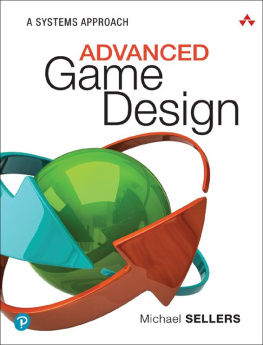
CONTENTS

INTRODUCTION
WHAT IS THIS BOOK, AND WHO IS IT FOR?
Teaching video game design is an incredible privilege; it is as much fun to teach making games as it is to play them. Over the years I have been able to communicate some very important rules to my students about how we should all approach making better games. This book has evolved over time out of those classes. This book introduces some of the concepts and principles of video game design and goes on to apply them when making a video game for whatever platform or genre. This is because ultimately the first rule of game design is, if you want to make games, go make games. Make games, make mistakes, and learn from them. It is much better to make five bad games and learn something important from each of them than spend years trying to make a perfect game. Rule two is, to make better games, you need to be informed about the discipline and process of making video games, whether that is as an independent, maker-as-owner small team, or as part of a larger team working for a big developer.
This book covers the fundamentals and principles of video game concepts and production. This is the book for you to use as a starting point from which to think about video games and to then make them. This book has evolved from my own experiences making art video games for exhibitions as well as from the video game design courses I have taught over the years. It is further informed by the students I have taught who have gone on to work at large video game design companies, as well as those who have created their own successful independent games. It is by design that the interviews and case studies in this book are focused towards independent game production because that is far more achievable for students. Although there are insights from the AAA (big video game titles) industry and from academics like myself, who study the industry and its output, there is deliberate focus on smaller, more achievable games. Small teams working on small titles are the heart and soul of the new video game industry; it is where the student becomes the designer and where ideas can be played out without the risk of losing millions of dollars. The examples and interviews examine the passion and drive of individuals who make small games that become best-sellers because that is what I hope my students will achieve.
TIP
JUMP AROUND!
This book is not a novel, and you may read the chapters out of order if that best serves your needs. The chapters and their content do follow a logical progression, but video game design is a multi-threaded and complex process, and you may find it helpful to flip back and forth between chapters as you work on designing your game(s). Feel free!
The first two chapters are the only ones that follow a set progressive pattern because they introduce conceptualizing and analysis of games, which you will need to better understand the medium.
Once underway, jump around to areas and content that interest you and take what you need as you need it. My hope is that this book will serve as an introduction to the complex, frustrating, and rewarding process of making your first video game. There is also additional information on the books website: www.bloomsbury.com/Salmond-Video-Game
As a game designer you must find your own path and create the game you want to make. There is no substitute for experience, but this book is focused on getting you from nowhere to starting earnestly creating your first game. The subject matter of this book cannot be applied wholesale to every genre or medium of video games. The book has been designed so that you can take the knowledge you need and work with it towards the process of creating a game. It offers guidance, theory, and subject matter that enable you to think of video games more deeply and to begin to understand the medium conceptually as a designer rather than as a player.

0.1
As with this perilous move in Mirrors Edge (DICE), all creative activities require a leap of faith. If you want to make video games you have to start now. Make that jump from someone who thinks about maybe one day making a game, to someone who is making a game. (image is from Mirrors Edge)
TIP
UNDERSTANDING THE EXAMPLES IN THIS BOOK
The examples scattered throughout this book are focused for the most part on Role Playing Games (RPGs), Action games and First Person Shooter (FPS) style games. Other genres are mentioned of course, but in order to streamline the content and make it relevant I am focusing on these popular genres/mechanics. As a game designer, it is important to understand that these principles and building blocks can be applied to a variety of video game formats and platforms. A level design for an FPS game could be modified to work just as well in an RPG game, and so on. It is the same for the platforms the games will be published toit is not within the scope of this book to delve into the specific nuances of developing for mobile versus console, or PC to web-based platforms. The principles and practices can be adapted to any game in any genre or for any platform once they have been understood.
PART 1: CULTURE, PLAY, AND GAMES

CHAPTER ONE
SO YOU WANT TO BE A VIDEO GAME DESIGNER?
Chapter Objectives:
Understand the nature of play.
Define the basic terms of game, play, culture, game cultures, and game rhetorics.
Begin the quest.

1.1
Characters from LittleBigPlanet and LittleBigPlanet 2, developed by Media Molecule.
RULES AND FORMULAS
Designers, like the games they make, work within rules. The rules may be constantly evolving and may even be different from person to person or studio to studio. Yet there are rules, and most of the rules come from knowing your medium and knowing yourself. This knowledge is critical to any creative pursuit. Passion and persistence will carry you a lot further than you might think, but the video game world is becoming a crowded place; video games are released on a daily basis, some with enormous budgets and some with no budget at all. The focus of this book is not simply to help you make a game, but to help you then make a better game. This chapter sets you on your journey towards becoming a better game designer, and that journey begins with listening, observing, and researching.
There is no one formula for creating a successful video game. If there were, more people would do it. Being informed about the industry and the important steps that go into the process can help you devise your own strategy for creating a viable game. There is no one exampleno one tutorialthat will show you how to make your game (my students try to find it every semester and so far they still have not). Instead, you need to draw from multiple sources and multiple points of interest: from psychology to art, from programming to traveling, from dreaming to sketching. Video games are often the personification of their creator; that is what makes them unique and interesting. They are the culmination of everything that person has learned and experienced, no matter what their age.
Next page

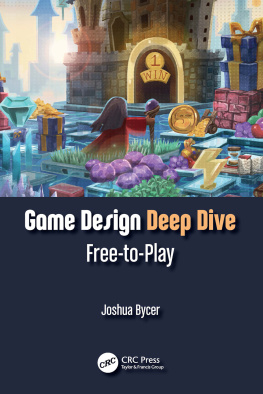

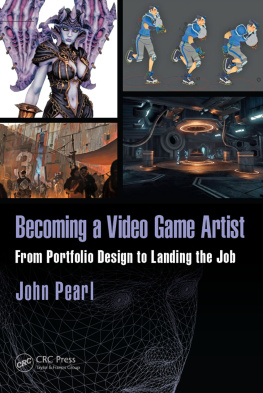
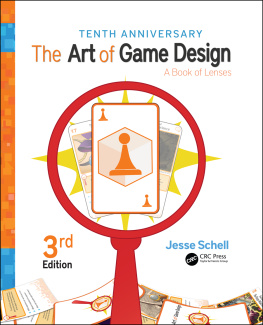
![Scott Rogers [Scott Rogers] - Level Up!: The Guide to Great Video Game Design](/uploads/posts/book/119441/thumbs/scott-rogers-scott-rogers-level-up-the-guide.jpg)
![Tracy Fullerton [Tracy Fullerton] - Game Design Workshop, 3rd Edition](/uploads/posts/book/119440/thumbs/tracy-fullerton-tracy-fullerton-game-design.jpg)
![Jesse Schell [Jesse Schell] - The Art of Game Design, 2nd Edition](/uploads/posts/book/119435/thumbs/jesse-schell-jesse-schell-the-art-of-game.jpg)
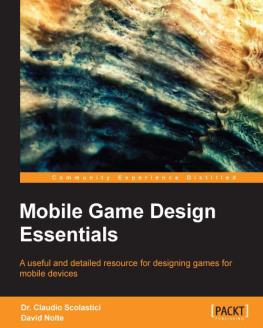
![Ethan Ham [Ethan Ham] - Tabletop Game Design for Video Game Designers](/uploads/posts/book/119417/thumbs/ethan-ham-ethan-ham-tabletop-game-design-for.jpg)
